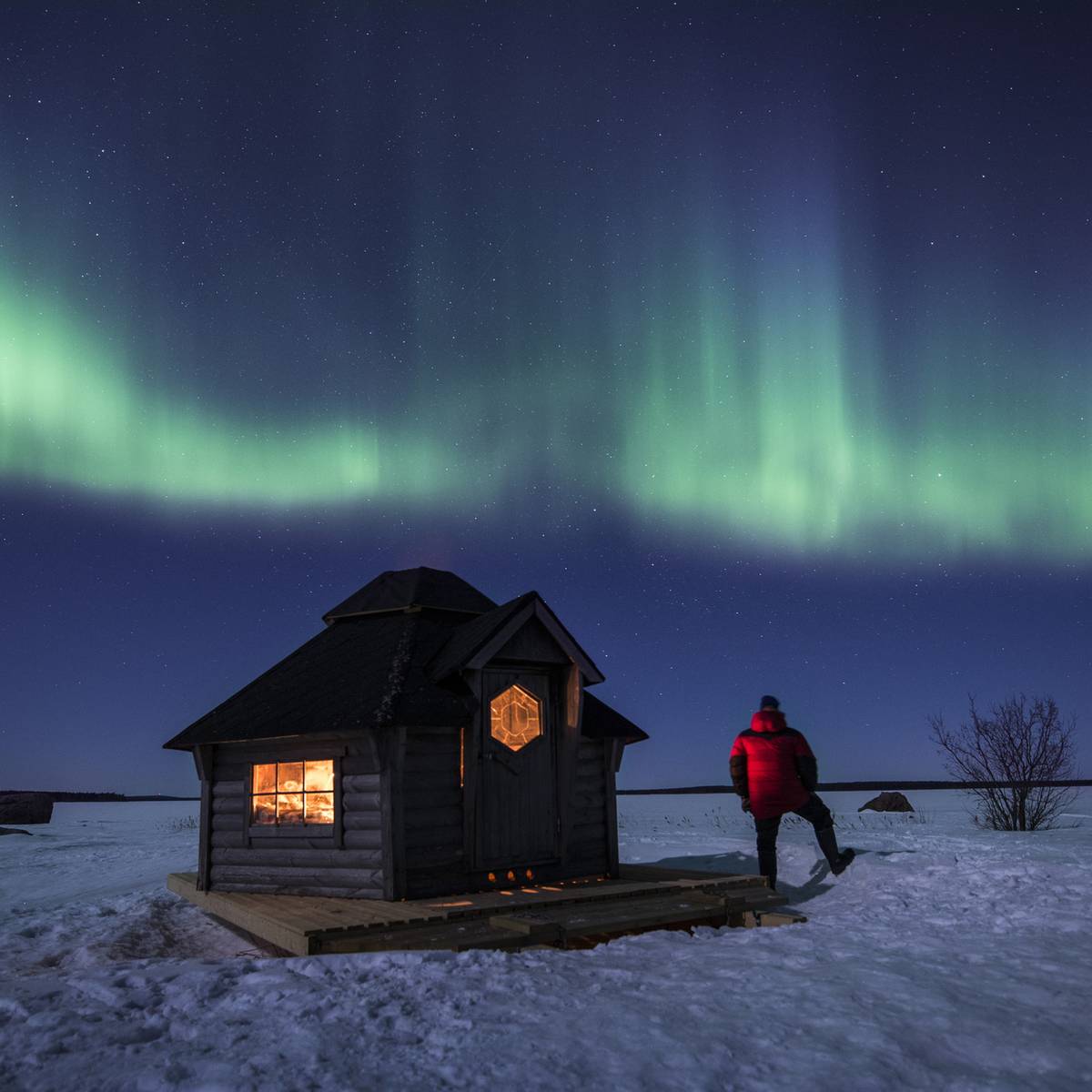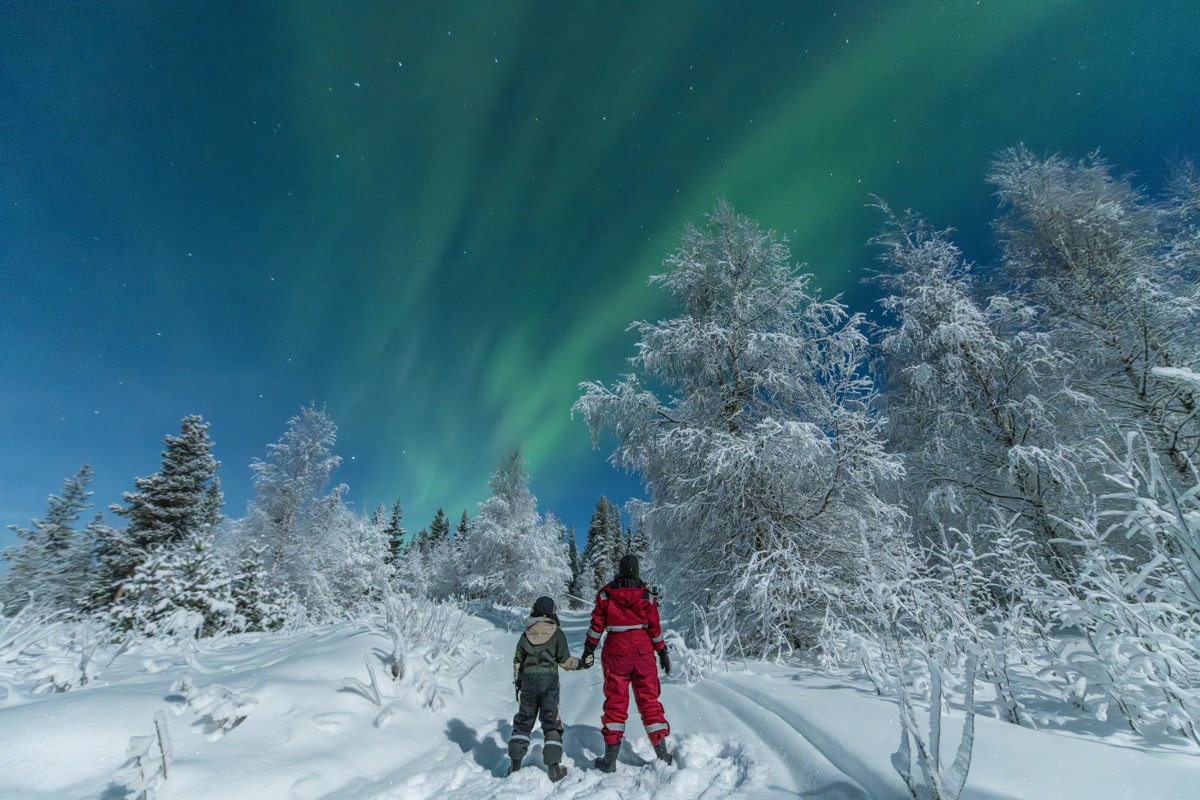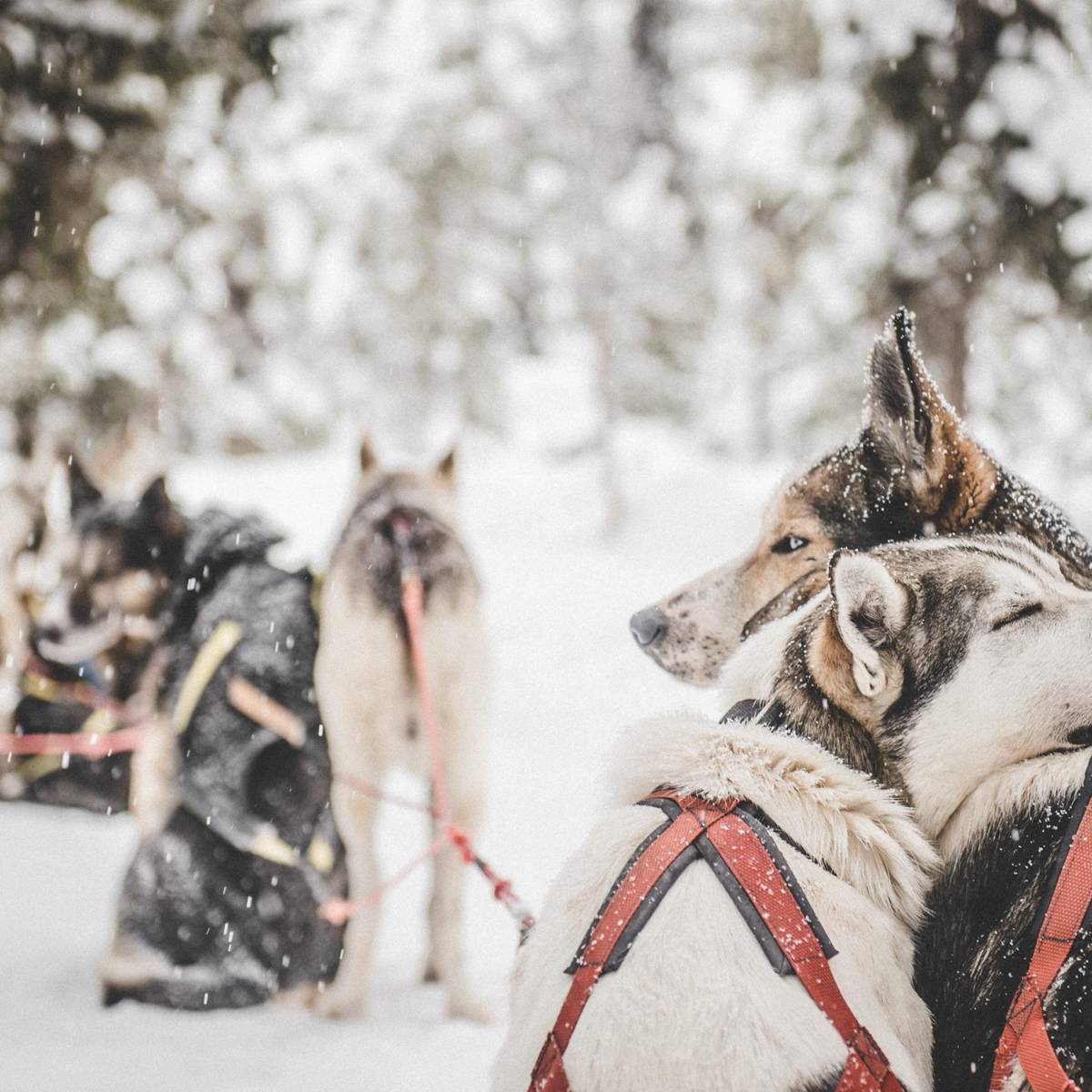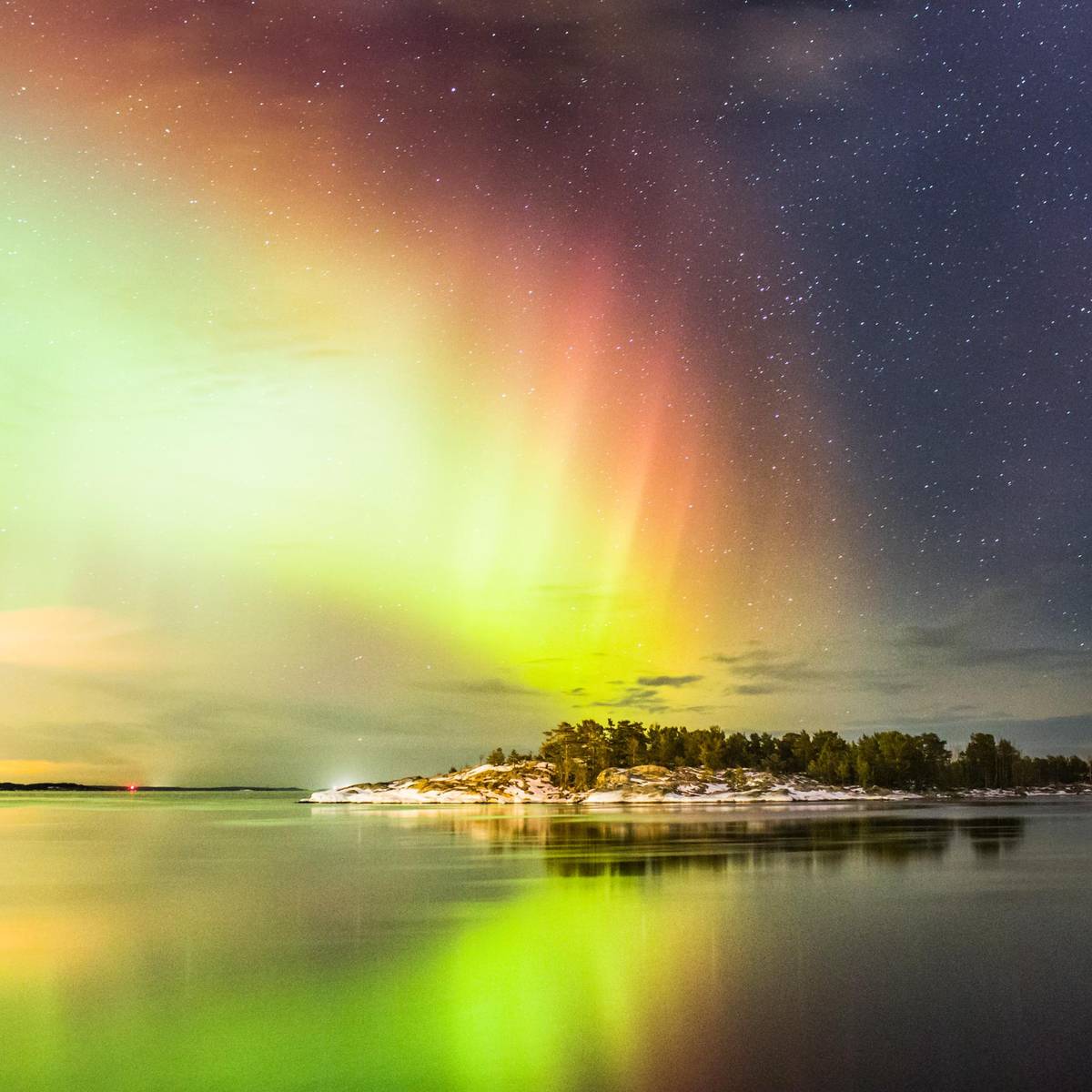How to photograph the Northern Lights
So, you’ve found your spot, checked the weather and dressed warmly. But how do you actually capture the Northern Lights? Photographing auroras can be tricky. It’s dark, often freezing, and the lights can appear and vanish without warning. Here are a few practical tips to help you increase your chances of getting that perfect shot.
Wear two pairs of gloves
Use a thick pair to keep your hands warm and a thinner pair underneath that allows you to handle your camera or phone without removing them.
Use a tripod
Shooting the Northern Lights often requires a long shutter speed, so keeping your camera steady is essential. A tripod is ideal, but a rock or car roof can also work in a pinch.
Set a timer or use a remote
Even the lightest touch can blur a long-exposure shot. Use your camera’s timer or a remote shutter release to avoid camera shake.
Avoid condensation
Moving your gear from warm indoor air to the cold outdoors can cause condensation on the lens. One trick is to place your camera in a waterproof bag and put that inside your camera bag while transitioning. If you’re only stepping indoors briefly, keep the bag closed, and the gear won’t have time to warm up.
Bring a spare battery
Cold weather drains batteries quickly. Always carry a fully charged extra battery and keep it close to your body to keep it warm.
Camera settings
Optimal camera settings depend on your equipment, location, and the conditions on the night; there’s no one-size-fits-all solution. However, here are some general guidelines to help you get started. Always shoot in RAW format if possible, as it gives you greater flexibility when editing your photos later.
- ISO: Start at ISO 800. If it’s very dark, increase to 1600 or even 3200.
- Shutter speed: Try 10–30 seconds. If the aurora is moving fast, reduce the exposure time to avoid blur and compensate with a higher ISO.
- Aperture: Use the lowest f-number your lens allows – ideally f/2.8 or lower.
- Focus: Switch to manual focus. Try focusing on a distant star or the moon, or set the focus to infinity.
If you’re unsure, many guided Northern Lights tours are led by photographers who can help you find the best settings on the night. For time-lapse photography, set your white balance manually to maintain a consistent tone across all images.
Mobile phone settings
While smartphone photos may not match the quality of a camera, you can still get impressive results by adjusting a few settings:
- Use night mode, if available.
- Turn off the flash to avoid overexposing nearby objects.
- Use manual focus, or tap to focus on the sky.
- Bring a tripod – stability is key, even for phone cameras.
- Carry a power bank – cold temperatures drain phone batteries quickly.
Good luck!










